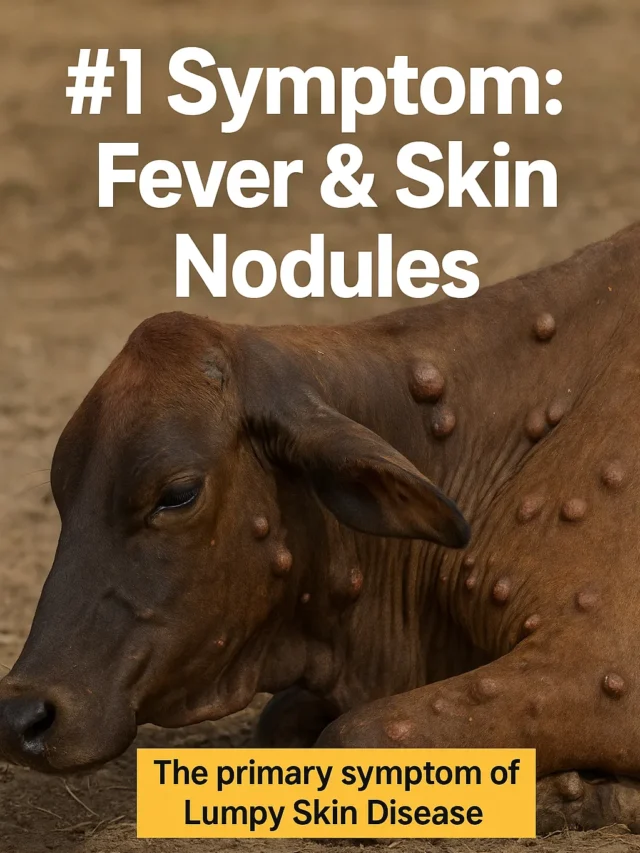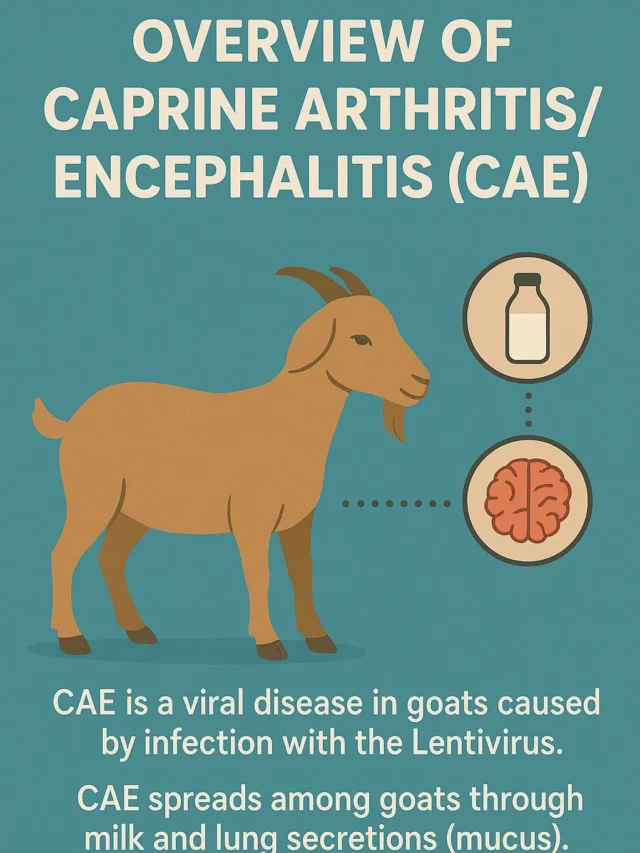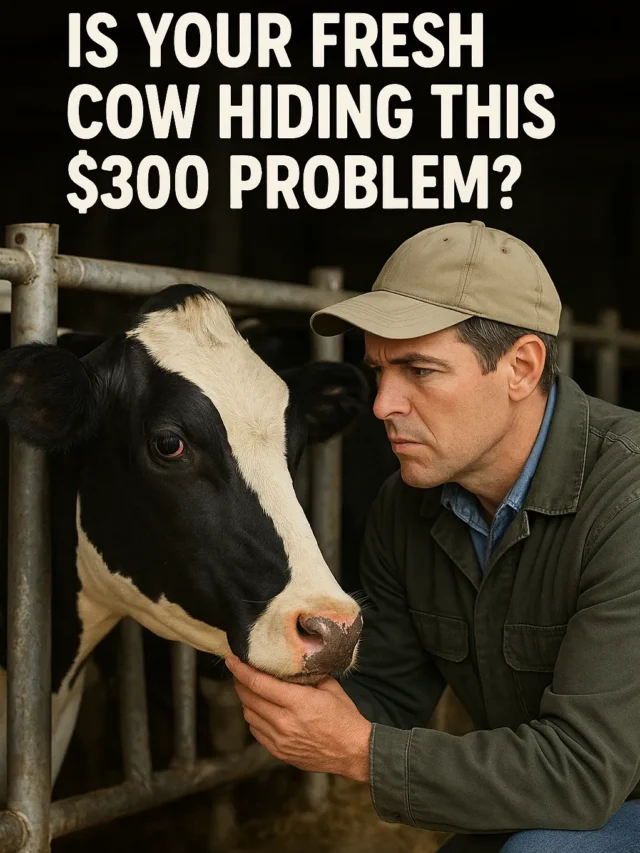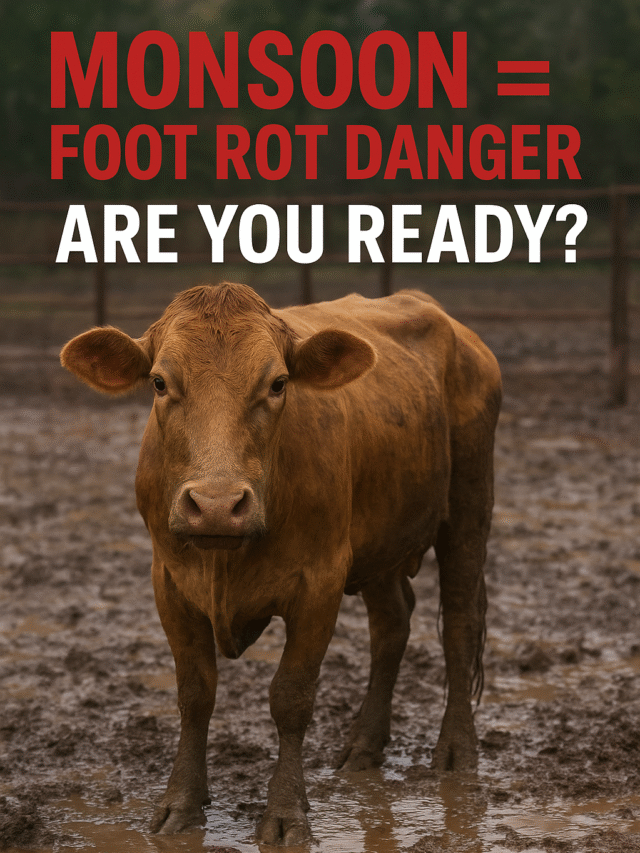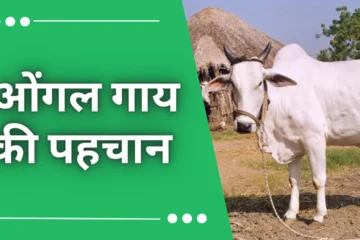Krishna Valley Cattle: Origin, Distribution, and Characteristics
The Krishna Valley cow is an Indian draught breed, primarily used for agricultural tasks such as carrying loads and plowing fields. This breed originated in the drainage areas of the Krishna River and its tributaries, such as the Ghataprabha and Malaprabha rivers.
The Krishna Valley bulls are particularly used in regions with black soil, which is considered suitable for crops like cotton. Due to this type of soil, these bulls are helpful in plowing for cotton sowing and performing other agricultural load-bearing tasks.
The Krishna Valley cow is an indigenous Indian breed that was developed through crossbreeding. It was created by crossbreeding Gujarat’s Gir breed, Kankrej breed from the Rann of Kutch, and Ongole (Nellore) breed from the Ongole taluk in Andhra Pradesh. As a result, the Krishna Valley cow embodies the traits of Gir, Kankrej, and Ongole breeds.
The Krishna Valley cow has the ability to work efficiently on less feed, making it particularly useful as a draught animal in agricultural tasks. This cow is one of the 53 native breeds registered by the National Bureau of Animal Genetic Resources (NBAGR) of India, headquartered in Karnal, Haryana.
The Krishna Valley breed has made a significant contribution to load-bearing tasks in Indian agriculture and is reared in various parts of the country.
Krishna Valley Cattle
| Scientific Classification |
|
|---|---|
| Synonym | Kistna Valley |
| Breeding Tract |
|
| Geographic Coordinates |
|
| Origin | The Krishna Valley cattle originated in the black soil regions along the Krishna River in Karnataka, resulting from crossbreeding Gir, Kankrej, and Ongole cattle. |
| Main Uses |
|
| Herd Book or Register Established | No |
| Breed Societies | No |
| Color | Grey-white with darker shades on fore and hind quarters; variations include brown-and-white and black-and-white patterns. |
| Horns | Curved, small horns that emerge outward from the head, curving slightly upward and inward. |
| Visible Characteristics | Massive body with a distinct bulge on the forehead, short thick legs, and a well-developed dewlap. |
| Average Male Weight | 550 – 600 kg |
| Average Female Weight | 350 – 400 kg |
| Management System | Semi-intensive; usually stall-fed with grazing allowed post-harvest. |
| Feeding | Grazing, fodder, and concentrates; green fodder includes sorghum, maize, and beans. |
| Performance |
|
| Peculiarity | Well adapted to hot and humid climates; capable of working efficiently on less feed. |
| Average Measurements | Males (Krishna Valley Bull):
Females (Krishna Valley Cow):
|
| Krishna Valley Cattle: The Rajasthan Express | |
Origin and History of Krishna Valley Cattle
The Krishna Valley cattle originated in the black soil regions of Karnataka, India, along the Krishna River and its tributaries, such as the Ghataprabha and Malaprabha rivers, during the 19th century. In the 1880s, the Maratha rulers of the Hyderabad district in Maharashtra reared this breed. The bulls of this breed were utilized as draught animals for plowing and carrying loads, particularly in black soil regions, which are suitable for crops like cotton.
To till the sticky black soil of the valleys of the Krishna River and its tributaries, a local breed called “Gaonti” was crossbred with Gir, Kankrej, and Ongole cattle, leading to the development of the Krishna Valley breed. The primary purpose behind creating this breed was to have animals capable of plowing and sowing crops like cotton in the black soil areas of the Krishna River valleys.
The Krishna Valley cow is an indigenous Indian crossbreed, developed by crossing Gir, Kankrej, and Ongole cattle. It carries the traits of Gujarat’s Gir and Kankrej, as well as Andhra Pradesh’s Ongole (Nellore) breed. While the Gir breed is primarily known for milk production, the Kankrej and Ongole breeds are used for dual purposes—both milk production and draught work in agricultural activities.
The color of Krishna Valley cattle is a mix of the shades found in Gir, Kankrej, and Ongole cattle. This breed also holds distinct recognition in foreign countries. The United States imported Gir, Kankrej, Ongole, and Krishna Valley breeds, crossbreeding them with local cattle to develop a new breed called the American Brahman cow. In the U.S., Brahman cattle are mainly used for meat and milk production.
Krishna Valley cattle are well-adapted to survive and thrive in extremely hot and humid climatic conditions. The King of Sangli played a crucial role in the development of this breed, helping maintain its purity and promoting its use for draught purposes.
Distribution of Krishna Valley Cattle
Krishna Valley cattle are primarily found in the black soil regions of the Krishna River valleys in Karnataka, India. Additionally, this breed is present in Maharashtra’s districts of Satara, Sangli, and Solapur, as well as Karnataka’s districts of Belgaum, Bijapur, and Raichur.
A 2001 survey indicated that the highest population of Krishna Valley cattle is found in Maharashtra and northern Karnataka. Currently, purebred Krishna Valley cattle can still be found in a few villages in the taluks of Jamkhandi, Mudhol, and Athani in northern Karnataka.
However, over time, the population of this breed has declined due to persistent drought conditions in the Krishna River valleys and the increasing mechanization of agriculture. Previously, these bulls were widely used for draught work like plowing and sowing, tasks that are now performed by tractors.
Moreover, farmers have started preferring the Khillari breed over Krishna Valley cattle for agricultural draught work, leading to a decline in breeding rates and the overall population of Krishna Valley bulls.
Alternative Names of Krishna Valley Cattle
The name “Krishna Valley” for this breed is derived from its origin in the valleys of the Krishna River in Karnataka. “Krishna” refers to the Krishna River, and “Valley” denotes the valleys. Additionally, Krishna Valley cattle are also known as “Kistna Valley.”
Main Uses of Krishna Valley Cattle
The Krishna Valley cow, primarily reared for draught purposes in agricultural work, is an indigenous breed of the southwestern region of India. It is specifically utilized for draught purposes in Karnataka.
However, other countries, such as the United States, have imported breeds like Gir, Kankrej, Ongole, and Krishna Valley, crossbreeding them with local cattle to develop the American Brahman breed. This breed is primarily reared for meat production.
1. Draught Purpose:
Krishna Valley cattle are particularly used for carrying loads and agricultural tasks. This breed is well-suited for working in hot climates. They are employed in the black soil regions of the Krishna River valleys for sowing crops like cotton and plowing fields.
Krishna Valley Cattle Characteristics
- Body:
Krishna Valley cows and bulls are large and powerful. The weight of Krishna Valley bulls typically ranges from 550 to 600 kilograms, while cows weigh between 350 and 400 kilograms. Their skin is loose and flexible, similar to Ongole cattle. Despite their size, they are considered suitable for agricultural work. - Color:
The general color of Krishna Valley cattle is white-grey, with dark brown spots on the front and rear parts of the bulls, similar to Ongole bulls. Cows are often light white in color. Additionally, this breed can have brown and white as well as black-and-white spotted patterns.
- Dewlap:
Krishna Valley cows have well-developed dewlaps (also known as “galakambal”). This is the loose skin that hangs under the neck, commonly found in Indian Zebu breeds. Exotic breeds do not typically possess this dewlap. - Horns:
The horns of Krishna Valley cows are usually curved and typically extend outward from the outer corners of the pole (the upper part of the head). These horns curve slightly upwards and then inward, and they are relatively small in size. - Distinctive Features:
The key distinguishing features of Krishna Valley cows include a pronounced bulge on their forehead, small curved horns, a thick neck, and short pointed ears. Their legs are short and thick, and their hooves are soft, making them less suitable for tasks other than agricultural work.
Average Measurements
Krishna Valley Bull (Males):
- Height: 145 – 150 cm (4.92 feet)
- Body Length: 153 cm
- Heart Girth: 196 cm
- Weight: 550 – 600 kg
- Calf Birth Weight: 28 kg
Krishna Valley Cow (Females):
- Height: 122 cm (4 feet)
- Body Length: 132 cm
- Heart Girth: 168 cm
- Weight: 350 – 400 kg
Key Points
1. Cattle-Related Terminology:
- Beef: The meat from cows is referred to as beef. The dressing percentage for beef is approximately 55%.
- Buffen / CaraBeef: The meat from buffaloes is known as Buffen or CaraBeef, with a dressing percentage of about 57%.
- Calving: The process of childbirth in cows and buffaloes is called calving. The offspring of a cow is called a calf.
- Sire: In animal breeding, the term “Sire” refers to the male animal. It is often considered “half of the herd” due to its significant role in determining the traits of the offspring.
- Dam: The term “Dam” refers to the female animal in breeding.
- Gestation Period:
- For cows, the gestation period is approximately 9 months and 9 days, or 283 days.
- For buffaloes, the gestation period is around 10 months and 10 days, or 310 days.
- Serving: The act of mating in cows and buffaloes is referred to as serving.
2. Cross Breeding:
- Breeding between two different breeds of the same species is known as crossbreeding. The offspring resulting from crossbreeding is called a crossbreed.
- Breed Complementation: The desirable traits of different breeds are combined into one breed.
- Heterosis / Hybrid Vigor: The offspring outperform their parents, a phenomenon also known as Hybrid Vigor.
- Cross Breed Animals: Crossbreed animals can produce more with less feed.
Cross Breeding Examples
| No. | Cross Breed | Breeding |
|---|---|---|
| 1 | Jar Sindh | Jersey ✖ Red Sindhi |
| 2 | Jar Thar | Jersey ✖ Tharparkar |
| 3 | Hisardale Sheep | Merino Sheep ✖ Magra Sheep |
| 4 | Karan Fries | Holstein Friesian (HF) ✖ Tharparkar |
| 5 | Charbray | Charolais ✖ Brahman |
| 6 | Chicana | 62.5% Charolais ✖ 37.5% Indu-Brasil |
| 7 | Charford | Charolais ✖ Devon |
| 8 | Char-Swiss | Charolais ✖ Swiss |
| 9 | Krishna Valley Cattle | Local Cow Gaonti ✖ Gir ✖ Kankrej ✖ Ongole cattle |
| 10 | American Brahman Cattle | American Local Cattle ✖ Gir ✖ Kankrej (Gujarat) ✖ Nellore (Ongole) ✖ Krishna Valley |
| Cross Breed: The Rajasthan Express | ||
Population Statistics of Krishna Valley Cattle
According to a breed survey conducted in 2013 by the Department of Animal Husbandry, Dairying, and Fisheries, Government of India, New Delhi, the estimated population of Krishna Valley cattle was approximately 3,462.
Discover the origin, characteristics, and conservation efforts of Krishna Valley cattle, a powerful draught breed used in the black cotton soil regions of India.
